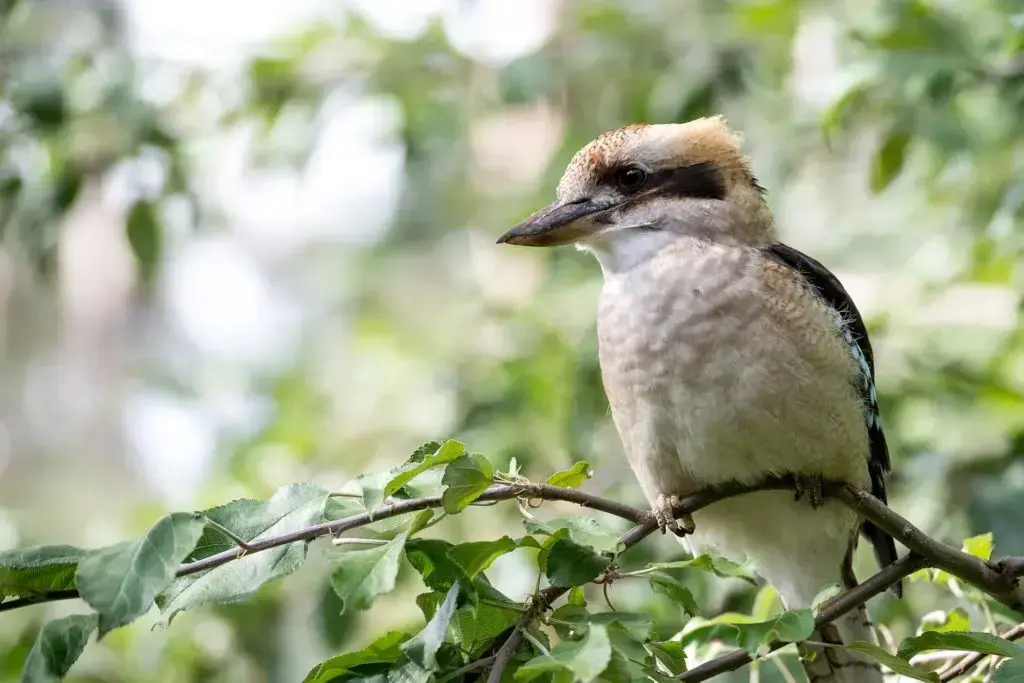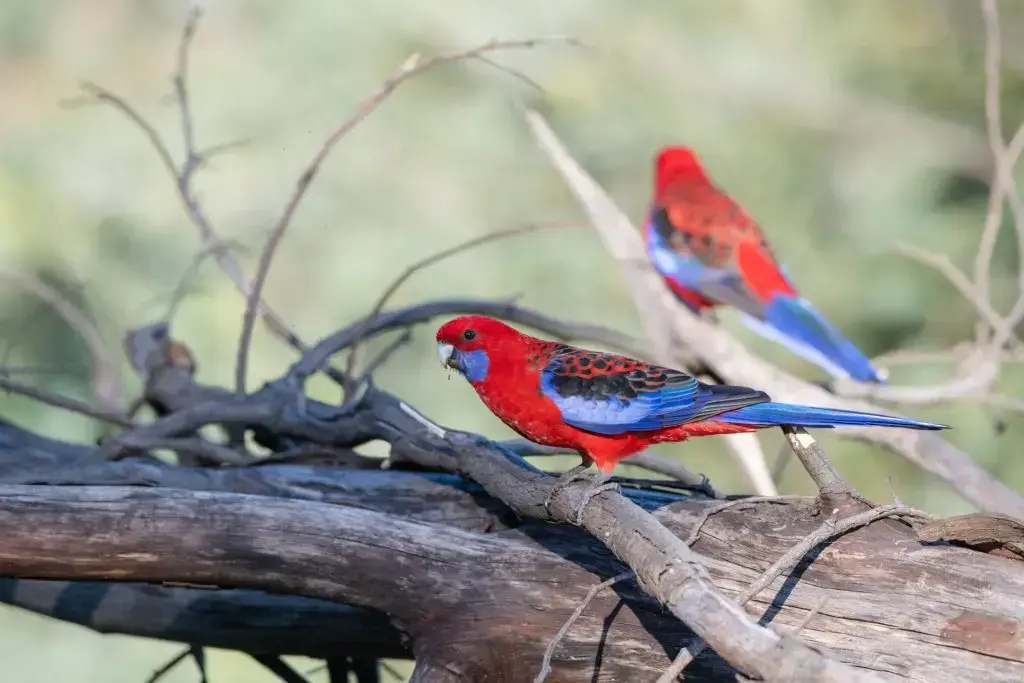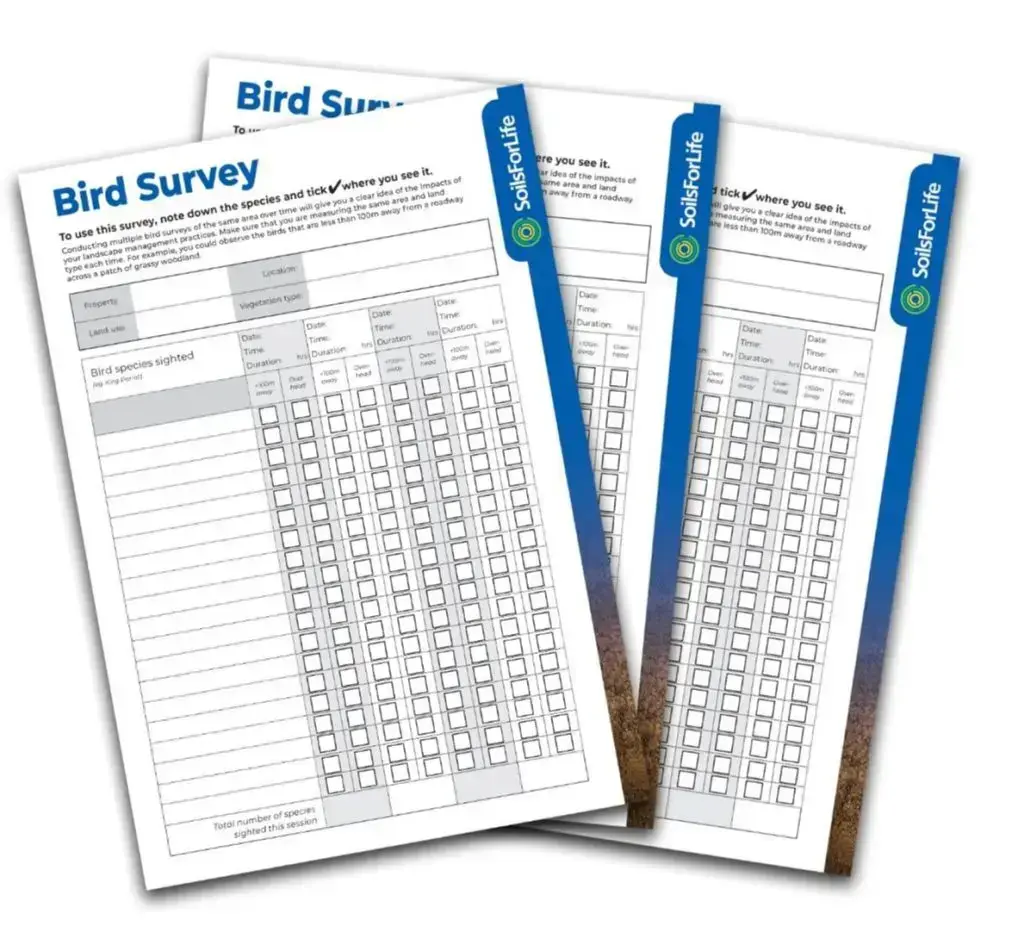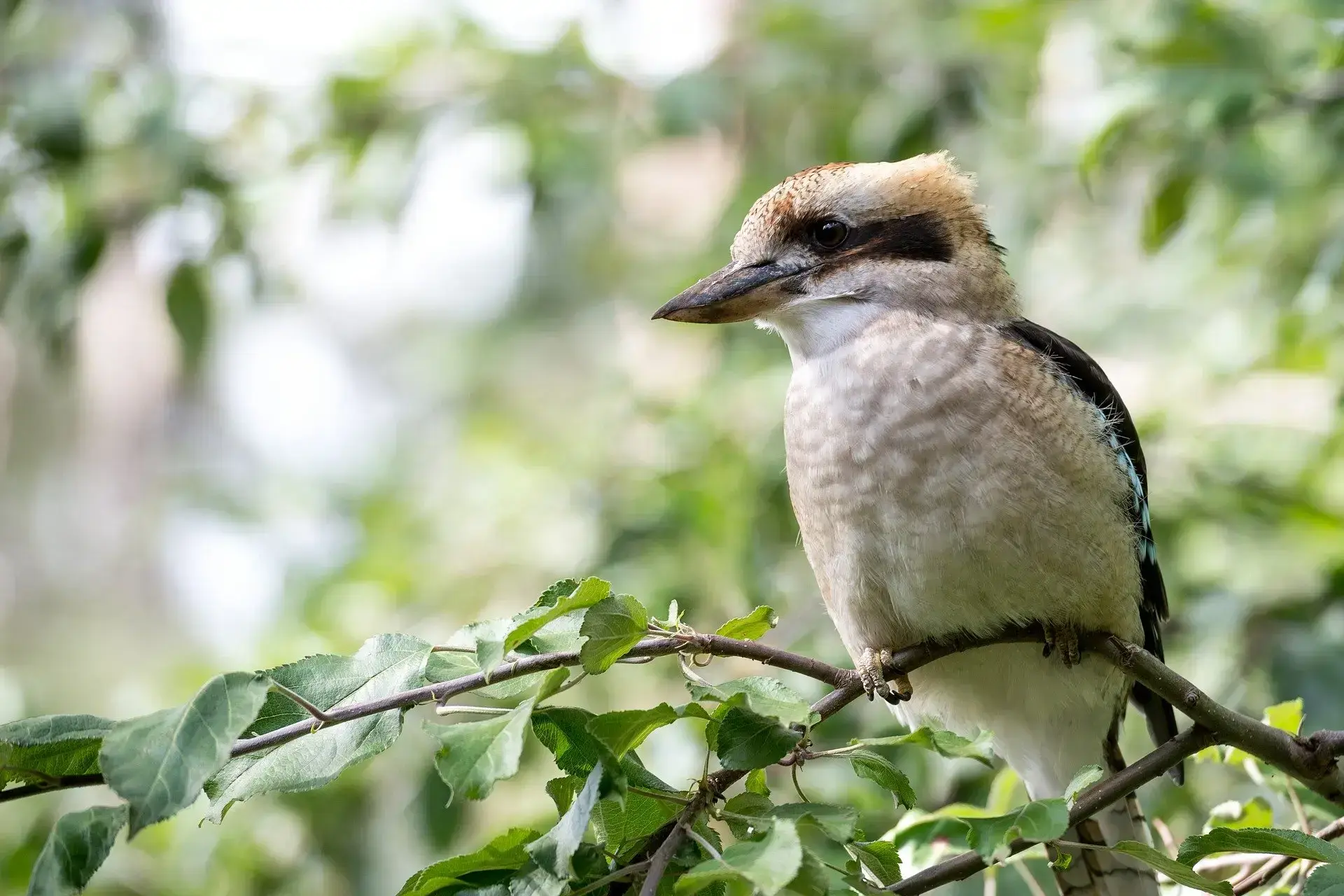Birds: Why and how to measure them on your property
By Richard Thackway and Greg Hosking
Results of repeated bird surveys, like repeated soil tests, can provide land managers with valuable information on how their land management is performing over time. In fact, the number and different types of birds found in different types of vegetation on a property can be used as a measure of management performance.

Why measure birds in your landscape
Birds are a practical indicator to monitor biodiversity. Any changes that you make to vegetation on your property will influence the type and number of birds by changing the availability of food, habitat or shelter. For instance, you might choose to remove exotic weed species and replace these with locally indigenous native plant species. Or you could decide to fence and revegetate an area of your property. Both management practices are likely to see some kind of change in food, habitat and shelter for birds.
Before you change the management of an area, it’s a good idea to establish a repeatable way to measure bird life. By establishing a robust survey, then repeating it in the same season each year over following years, you will measure the impact on biodiversity that the changes your management practices have on the landscape.
Birds and vegetation
You can expect that establishing native plant shelterbelts or fencing out remnant patches of native vegetation will provide more habitat for local bird species to occupy. As a patch of vegetation matures (i.e. becomes more vertically complex and provides more resources like food, shelter and nest sites) it’s usual for a greater number and variety of birds to be present. However, one factor that strongly influences the variety and number of birds found in such sites is how well the native vegetation on the property is connected with larger patches of mature native vegetation in the surrounding landscape.
Garry Kadwell’s property ‘Fairhalt’, a Soils For Life case study, illustrates how this works in practice. His well-considered approach to the size, connectivity and proximity of his revegetation projects increased the numbers and types of birds visiting and staying to breed.
Revegetating a site with native plant species and encouraging the regeneration of native tree, shrub and ground cover plants will influence the types of birds and the number of birds over time and in different seasons. However, established non-natives also provide valuable habitat for birds so it’s important to consider their value to bird life and the other roles they play in the landscape (ie shade, amenity, stabilising waterways) before removing them.

Measuring bird life over time
Consistently recording the bird communities found on your property can provide you with valuable information about how the quality and extent of bird habitat has changed over time. We encourage land managers to use the same bird survey technique each time that they survey birds.
To limit the variables, make sure you repeat your survey in the same season every year. An ideal time to survey birds is the first week of ‘spring’ (whatever time that may be in your agro-climatic region). For example, in Canberra it’s best to survey in the first week of October. Whatever time of the year you choose make sure you perform the survey at that same time in following years. Of course, you may wish to survey multiple times each year, depending on the seasonal variation of your climate. In rangelands settings, it is best to do this survey up to three weeks after rain.
Doing your first survey BEFORE you make changes (e.g. removing the weeds or fencing a remnant patch of native vegetation) will give you a fuller understanding of the impact of the changes on the landscape.
The Soils For Life Bird Survey
To assist you to conduct robust and repeatable bird surveys, we have produced an easy to use bird survey template. Filling it out over seasons will provide more detailed and useful information about the bird life on your property than a simple species list. You may need multiple copies if you have a lot of bird life on your property.

Other survey techniques
Birdlife Australia has information on other types of bird survey techniques available for use on farms. They have also developed an app for mobile devices which can be used to record bird surveys. The Birddata app is free to download/use for both Android and Apple users. A range of different survey methods are available to use within the app. It also gives you the opportunity to trial different survey methods to determine the method that best suits your purposes, once you’ve found what works sticking to that method is the recommended approach.

Things to consider when conducting a survey
- Survey at the same time of year every year. The first week of spring each year is a good time.
- Use the same survey technique each time you survey.
- Set a duration of time that you will spend on the survey (ie one hour) and use that duration consistently each time you complete a survey.
- Different types of vegetation-cover and land use deserve a separate survey. For example, do separate surveys for ridges, slopes, river flats, dams etc.
- Use binoculars. They don’t need to be expensive, but 8 or 10 x 42 are best for birdwatching.
- Pleasant weather – without wind and rain – is best for bird watching.
How to identify bird species
Many of you will have a field guide on your bookshelf or kitchen bench. You can use this to help you identify the species of bird. If you don’t already have one, the commonly used bird identification manuals across Australia are:
- The Field Guide to the Birds of Australia – by Graham Pizzey and Frank Knight
- Field Guide to the Birds of Australia – by Ken Simpson and Nicholas Day
For more information on identifying bird species try the following places:
- Birdlife Australia
- The Australian Museum
- Australian Birds Guide app for Apple or Android
Want to know how to improve bird life on your property? Jillamatong, Fairhalt and Talaheni are Soils For Life case studies that have all reported positive change in bird life over time.




